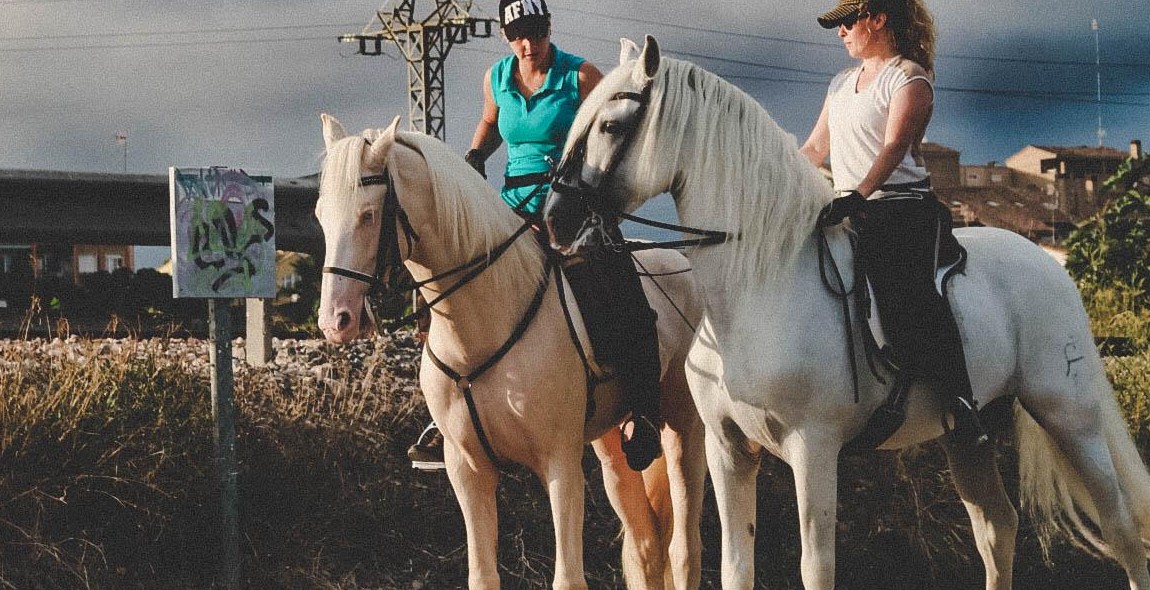How to Identify Animal Tracks: Tracking and Wildlife Observation Skills
Tracking animals is a fascinating and rewarding hobby for nature enthusiasts and wildlife photographers. It requires a keen eye for detail and a deep understanding of animal behavior. Identifying animal tracks is an essential skill for anyone interested in tracking, as it provides valuable information about the animal’s species, size, and behavior.
Animal tracks are the impressions left by an animal’s foot on the ground or other surfaces, such as snow, sand, or mud. They can reveal a lot about the animal’s behavior, such as its speed, gait, and direction of travel. Identifying animal tracks can also help you locate animals, as they often leave tracks near their feeding or nesting areas.
The Importance of Wildlife Observation Skills
Wildlife observation skills are crucial for anyone interested in tracking animals. Observing animals in the wild can provide valuable insights into their behavior and habitat. It can also help you identify the tracks left by different animals, as well as other signs of their presence, such as scat, fur, and feathers.
Effective wildlife observation requires patience, persistence, and a good understanding of animal behavior. It is also important to respect the animals’ space and not disturb them or their habitat. With practice and experience, you can develop your wildlife observation skills and become a skilled tracker and wildlife photographer.
How to Identify Animal Tracks
Identifying animal tracks requires a systematic approach and a good understanding of the animal’s anatomy and behavior. You need to look at the shape, size, and number of toes, as well as the overall shape of the track. You should also consider the habitat and location where the track was found, as different animals prefer different environments.
There are many resources available to help you identify animal tracks, including field guides, online resources, and local tracking clubs. With practice and experience, you can become a skilled tracker and wildlife observer, and gain a deeper appreciation for the natural world around you.

Why Learn to Identify Animal Tracks?
Learning to identify animal tracks is a valuable skill for anyone interested in understanding animal behavior, tracking for hunting, or increasing their environmental awareness. Here are some reasons why:
Understanding Animal Behavior
Identifying animal tracks can help you understand how animals move, where they go, and what they do. By learning to read tracks, you can determine the direction and speed of an animal’s movement, as well as its size and weight. This information can be useful for tracking and observing animals in the wild, as well as for understanding their behavior and habitat preferences.
Tracking for Hunting
For hunters, tracking animals is an essential skill. By identifying tracks, hunters can determine what kind of animal they are tracking, how long ago it passed through an area, and where it is headed. This information can help hunters plan their approach and increase their chances of a successful hunt.
Environmental Awareness
Identifying animal tracks can also help increase your environmental awareness. By learning to recognize the tracks of different animals, you can gain a better understanding of the wildlife in your area and the habitats they inhabit. This knowledge can help you appreciate the natural world around you and inspire you to take steps to protect it.
Overall, learning to identify animal tracks is a valuable skill that can help you better understand animal behavior, track for hunting, and increase your environmental awareness. Whether you are a hunter, wildlife enthusiast, or simply someone who enjoys spending time in nature, this skill is worth learning.

Basic Animal Track Identification
Identifying animal tracks can be an exciting and rewarding experience for wildlife enthusiasts, hikers, hunters, and anyone who enjoys spending time outdoors. Knowing how to identify animal tracks can also be a valuable skill for wildlife observation and tracking. Here are some basic tips for identifying animal tracks:
Track Shape
The shape of an animal track can provide valuable information about the animal that made it. For example:
- Rounded tracks with four toes and a heel pad are often made by canines, such as dogs, coyotes, and foxes.
- Hoof-shaped tracks can be made by ungulates, such as deer, elk, and moose.
- Paw-shaped tracks with five toes and a heel pad are often made by felines, such as cats and bobcats.
Track Size
The size of an animal track can also provide clues about the animal that made it. For example:
- Larger tracks are generally made by larger animals, while smaller tracks are made by smaller animals.
- The size of the heel pad can indicate whether the animal was walking or running.
Track Pattern
The pattern of animal tracks can also be helpful in identification. For example:
- Tracks in a straight line may indicate that the animal was walking or running in a straight path.
- Tracks that are close together may indicate that the animal was walking slowly or cautiously.
- Tracks that are far apart may indicate that the animal was running or leaping.
| Animal | Track Shape | Track Size | Track Pattern |
|---|---|---|---|
| Deer | Hoof-shaped | 2-3 inches | Two prints close together, then a gap as the deer leaps forward |
| Coyote | Rounded with four toes and a heel pad | 1.5-2.5 inches | Tracks in a straight line, often in pairs |
| Bobcat | Paw-shaped with five toes and a heel pad | 1-2 inches | Tracks in a straight line, often with a larger gap between prints than a house cat |

Identifying Animal Tracks by Species
Learning to identify animal tracks by species can be challenging, but with practice and knowledge of each animal’s unique characteristics, it is possible to become proficient at tracking. Here are some key characteristics of common animal tracks:
Deer and Elk Tracks
Deer and elk tracks are easily recognizable due to their cloven hooves. These tracks are typically around 2-3 inches in length and 2-3 inches in width. The two halves of the hoof are separated by a deep V-shaped groove. Deer tracks are more pointed than elk tracks, which are more rounded.
Bear Tracks
Bear tracks are large and round, with five toes on each foot. The toes are arranged in a semi-circle, with the largest toe on the outside. The claw marks are usually visible, but not always. Black bears have shorter claws than grizzly bears.
Coyote and Fox Tracks
Coyote and fox tracks are similar in appearance, but coyote tracks are larger. Both have four toes and a distinctive X-shaped pattern in the middle of the track. The claws are usually visible in the tracks.
Raccoon Tracks
Raccoon tracks are easily recognizable due to their hand-like appearance. They have five toes on each foot, which are arranged in a way that resembles a human hand. The claws are usually visible, and the tracks are around 2-3 inches in length and width.
Rodent Tracks
Rodent tracks can be difficult to identify, as they are small and often blend in with the surrounding terrain. However, they typically have four toes on each foot, with the front toes being smaller than the back toes. The tracks often have a distinctive pattern, such as a diagonal line between the front and back toes.
| Animal | Track Size | Number of Toes | Claw Marks | Distinctive Features |
|---|---|---|---|---|
| Deer/Elk | 2-3 inches | 2 | Visible | Cloven hooves |
| Bear | 4-7 inches | 5 | Visible (usually) | Large, round tracks |
| Coyote/Fox | 2-3 inches | 4 | Visible | X-shaped pattern in middle of track |
| Raccoon | 2-3 inches | 5 | Visible | Hand-like appearance |
| Rodent | Less than 1 inch | 4 | Not always visible | Distinctive pattern between front and back toes |

Tools for Animal Track Identification
Identifying animal tracks can be challenging, especially for beginners. Fortunately, there are several tools that can help you become a pro at identifying animal tracks. Here are some of the most effective tools:
Field Guides
Field guides are books that contain detailed information about different animal species, including their tracks. These guides usually have illustrations and descriptions of the tracks, as well as other identifying features such as scat, fur, and habitat. Some popular field guides for animal tracks include:
- “Mammal Tracks and Sign: A Guide to North American Species” by Mark Elbroch
- “Peterson Field Guide to Animal Tracks” by Mark Elbroch and Eleanor Marks
- “Tracking and the Art of Seeing: How to Read Animal Tracks and Sign” by Paul Rezendes
Smartphone Apps
In today’s digital age, there are several smartphone apps that can help you identify animal tracks. These apps use photos and descriptions to help you identify the tracks you come across. Some popular apps for animal track identification include:
- iTrack Wildlife
- NatureTrack
- Trackin’ Wildlife
Tracking Cards
Tracking cards are laminated cards that you can carry with you on your hikes or walks. They typically have illustrations and descriptions of the tracks of common animal species. Some popular tracking cards for animal tracks include:
- “Animal Tracks: A Folding Pocket Guide to the Tracks and Signs of Familiar North American Species” by James Kavanagh
- “Wildlife Tracks” by Jonathan Poppele
| Tool | Pros | Cons |
|---|---|---|
| Field Guides | Comprehensive information, detailed illustrations | Can be heavy to carry, limited to the species in the book |
| Smartphone Apps | Convenient, easy to use, can cover a wide range of species | Requires a smartphone, may not work in areas without reception |
| Tracking Cards | Compact, easy to carry, laminated for durability | May not cover all species, limited information |

Tips for Animal Track Identification
Identifying animal tracks is an essential skill for wildlife observation and tracking. Here are some tips to help you identify animal tracks:
Track Age and Freshness
When identifying animal tracks, it is important to consider the age and freshness of the tracks. Fresh tracks are easier to identify because they have sharper edges and clearer details. Older tracks may be faded or distorted, making them more difficult to identify.
Track Location and Habitat
The location and habitat of the animal can also provide clues for identifying tracks. Different animals have different habitats and territories, so the location of the track can help narrow down the possible species. For example, tracks found near water sources may belong to aquatic animals, while tracks found in wooded areas may belong to forest-dwelling animals.
Track Gait and Behavior
Animal tracks can also provide information about the animal’s gait and behavior. Different animals move in different ways, leaving unique track patterns. For example, a bounding track pattern may indicate a rabbit or hare, while a waddling pattern may indicate a duck or goose. The behavior of the animal can also be inferred from the tracks. For example, a trail of tracks leading to a disturbed area may indicate that the animal was digging for food or searching for shelter.
| Track Pattern | Animal |
|---|---|
| Bounding | Rabbit or Hare |
| Waddling | Duck or Goose |
| Gallop | Deer or Antelope |
By considering these factors, you can become a more skilled tracker and wildlife observer. Remember to take note of the size, shape, and details of the tracks, and compare them to identification guides or consult with experts if necessary.

Conclusion
In conclusion, tracking and wildlife observation skills are essential for any nature enthusiast. Learning how to identify animal tracks is an important part of these skills, and it can be both fun and rewarding. With the right knowledge and practice, you can become an expert tracker and spot animals that you might otherwise miss.
Remember that identifying animal tracks is not always easy, and it takes time and patience to become proficient. It’s important to pay attention to the details of each track and consider the context in which it was found. By doing so, you can gather valuable information about the animals that inhabit your surroundings.
Some key tips to keep in mind when identifying animal tracks include understanding the anatomy of the animal, considering the size and shape of the track, and observing the surrounding environment. Additionally, it’s important to be safe and respectful when tracking animals, and to always leave no trace behind.
- Practice identifying animal tracks regularly to improve your skills
- Take note of the details of each track and the surrounding environment
- Be safe and respectful when tracking animals, and always leave no trace behind
Overall, learning how to identify animal tracks can be a fun and educational experience that enhances your appreciation for nature and wildlife. So get out there and start tracking!
